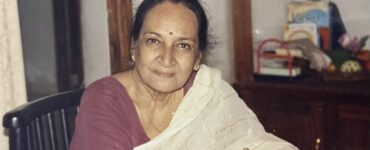Covid 19 – A household name. As soon as you utter the name the things that come to mind are isolation, social distance, quarantine, and a host of other words which suggest living alone, managing alone spending time alone and having nothing to do. It is a dilemma that pesters every one young and old alike today. For people in the post-retirement stage of life this is not a difficult proposition. You are already used to depending on your own resources. Other than the paid help, you have no one to talk to. But that has never been a problem. Even when you are young that’s probably how you lived your life. Sitting in a corner, cosy and quiet, burying your head in a book. The past for us is longer and more eventful than the possible length of our future. To think of it, what books you read all the time, good, bad, ugly- does not matter as long as it is a book. that’s all. But after a certain stage when that became a passion, you begin to choose and to look for not popular books and books of the hour but books of all time. Now who would have ever thought this passion of yours becomes your lifeline in the Covid-19 lockdown days.
Today sitting alone in my three bed-room flat wherein two rooms are full of my lifetime collection of books I have no need to wonder how to spend my time. One gets tired of TV and the non- stop of coverage of the virus and its spreading tentacles. Nevertheless, on one fine morning my mind got into a puzzling question. I have been reading all the time – how much do I remember, and to what purpose. For a number of days recently, probably the existential dilemmas created by Corona caused this situation, even my reading has become question mark. Then my mind started digging deeper going back to my school days, college days the books I have read and the books I still consider to be a great contribution to literature. While on a visit to Vijayawada I came across the Bondalapati family whose publication of Sarat novels has brightened my school days.
Reading 27 Sarat novels in five days, forgetting to attend the marriage that we all went to attend, engrossed in the library of the host -all memories that belong to an early past, I can’t recall the titles of all those books except for a few like Vagdatta, Baatasaari, Srikant and so on. Then while in college in late 60s and 70s Kannada novels in Telugu were next in my memory bank. The great well-known duo Triveni and Sarvani were the names that come to mind. But my reading was at a relatively slow phase this time. A number of books one after the other. Many of her novels were published by Emesco pocket books and some were published as mini novels in the monthly journals like Jyothi and Chatura in 70s. But it all started with the novel Vendimabbu that was published as a serial in Andhra Patrika , a weekly magazine. But after reading one or two my friends and I never hesitated to pick up any book that was written by the Kannada writer Triveni and translated by Sarvani. This sends me on a new quest, to think of all those books and tell others about them. I have recently acquired most of her books again thanks to her daughter, long-time friend and colleague, Kalyani Neelarambham daughter of Smt. Sarvani.
First about the author Triveni. Her real name was Anasuya Shankar. She was born on 1st September 1928 in Mandya, Karnataka. She has acquired mastery over Kannada and English languages having done her graduation. “Huvvu-Hannu” “Keelugombe” “Somagaddevallu” “Bellimoda, and a host of other novels numbering about 29. She also wrote a number of short stories. She was a well-known name in Kannada households and was fondly referred to Kannada’s Jane Austen. When she wrote her novels in 60s and 70s. Most of her novels have become popular because her focus on women’s sensibilities. She was never seen as a conformed feminist but her novels were mostly women centric. Some of her novels like Vendimabbu, Sarapanjara, were made into films.
Next good fortune comes to us in the form of Sarvani, whose real name was Neelarambham Saradamma who came from Kolar district. Saradamma was not formally educated but through a strong determination acquired mastery over Telugu and Kannada languages. Her family belonged to the Nandavarika sect of brahmins who had settled down in the village Nandavaram having migrated from Kashi in those days. She was married to Neelarambham Ramayya a bank official who was working in Bangalore but belonged to Chittor in Andhra Pradesh. While she worked her hard to learn Kannada language, she was introduced to Telugu magazines by her husband who used to get Andhra Prabha and Andhra Patrika for her to practice reading Telugu. That lead to her gradual mastery of literatures of both these languages. After a transfer the family shifted to Rajahmundry and Saradamma pursued her reading. After losing her young son to meningitis to overcome her sorrow she turned to translations, says Kalyani in one of her interviews on her mother recently. Her first attempt Vendimabbu was published in Andhra Patrika Her remarkable talent made her one of our outstanding translators. She never violated the spirit of the original style or language but brought effectively the flavour and ethos of Telugu effortlessly in her translations from Kannada to Telugu. She has started the trend and was in a way a pioneer, a torch that showed light to the later day translators. Efforts are being made to republish some of her well-known translations of Kannada novels Triveni’s novels being the most significant amongst them.
My effort here is to dig as much as I can and bring out my impressions of some of the Telugu fiction I read in those days.
It was just an accident that my early memories of reading were the translations of Sarvani, hence I will try to pen down some of my impressions of these books then and now and, try to project how my perceptions evolved over the years and now when I gave a second reading they came to me with a new insight.
*









Good going